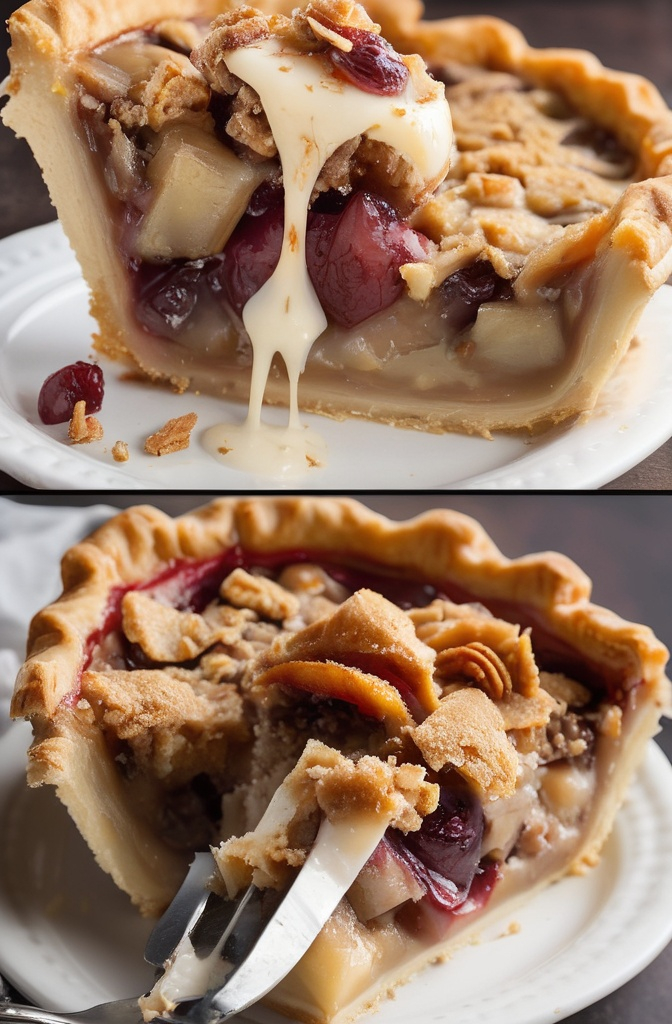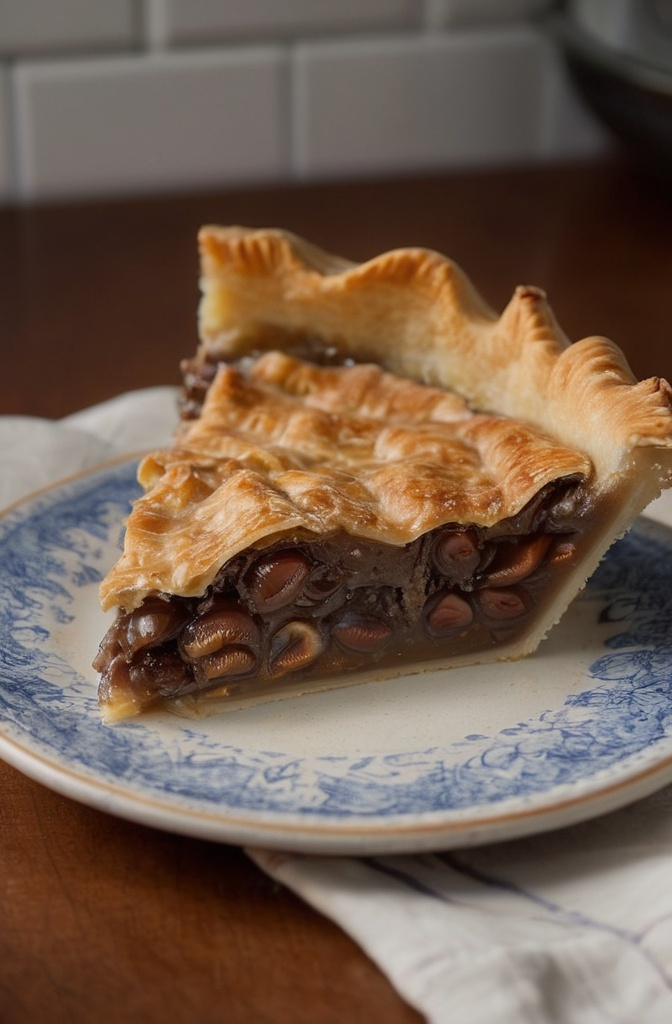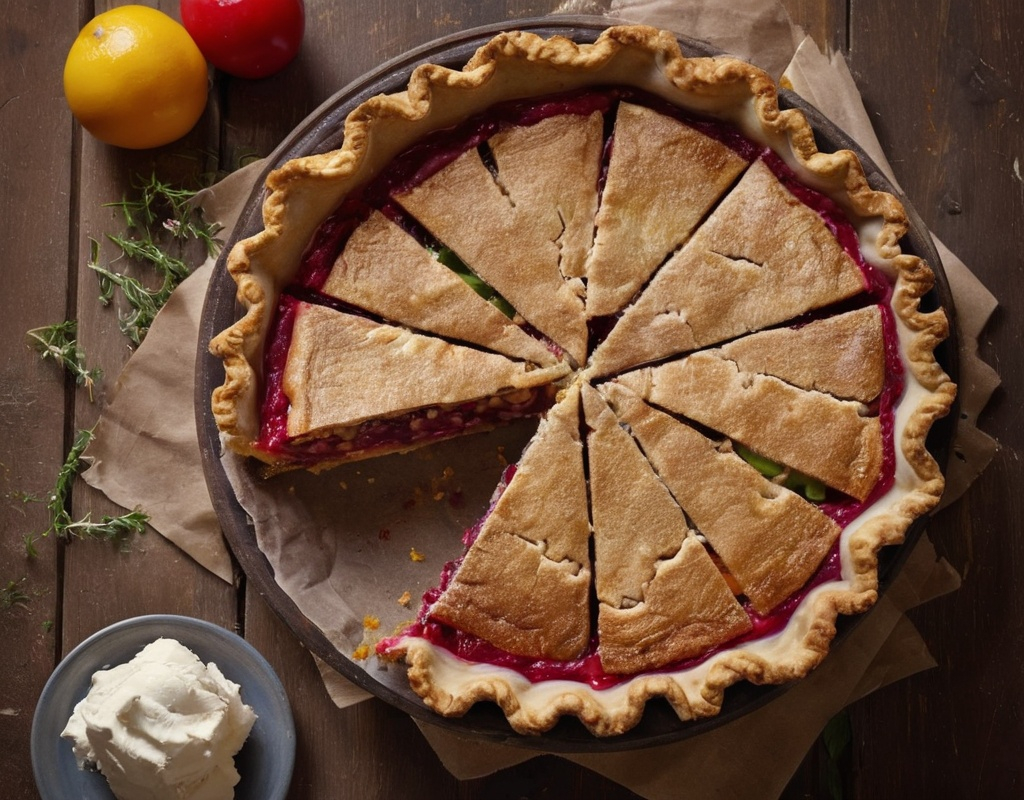If you’ve ever tried to make a pie crust from scratch and nearly flung it out the window in frustration, welcome to the club. There’s something about that perfect ratio of fat to flour that drives even seasoned chefs into bouts of existential dread. Enter the Crazy Crust Pie—an oddball, back-pocket recipe that flips the script on pie-making. It’s a recipe so counterintuitive that it borders on genius, and it just might deserve a permanent place in the professional cook’s arsenal.
This ain’t your grandmother’s buttery pâte brisée or flaky shortcrust. Nope. The Crazy Crust Pie is a 1960s American invention that feels like a practical joke until you see it rise and crisp in the oven like magic. We’re diving deep into the mechanics, science, and surprising elegance of this dish. This isn’t a gimmick. It’s a shortcut with soul.
What Is a Crazy Crust Pie, Really?
Let’s be blunt—it’s a crust made from a batter, not a dough. I know. Sounds wrong, doesn’t it?
Instead of rolling out pastry, you whip up a thin, pancake-like batter made from flour, eggs, milk, and a little oil. Pour it into the pan, dump your filling right on top, and it bakes into a cohesive pie with a crust that puffs up around the edges like it’s been practicing its lines for a Bake Off audition. It’s half souffle, half miracle. And it works. Every. Dang. Time.
The crust forms around the filling as it bakes, climbing the sides of the pan like it’s running from something. What you’re left with is a tender, golden, slightly crisp edge, with a center that stays soft but structured. Think popover meets casserole meets pie. Weird? Yes. Worth it? Absolutely.
Origins: The Back-of-the-Box Alchemy
Crazy Crust Pie first appeared in print around the 1960s, likely born in the golden age of processed food and convenience cooking in America. Think of it as the spiritual cousin of Bisquick’s impossible pies. You know the kind: you mix a few pantry staples, pop it in the oven, and magic happens.
It’s not haute cuisine, but that’s kind of the point. This was Depression-era resilience wrapped up in a suburban casserole dish. And while it never made it into fine dining lexicons, it quietly lived on in church cookbooks, county fairs, and the minds of busy home cooks who needed a fast, filling meal with minimal cleanup.
But don’t let its humble beginnings fool you—there’s clever science at work here.

The Science Behind the Madness
Here’s where things get interesting.
The batter in a Crazy Crust Pie is essentially a thin custard enriched with flour and fat. When it hits the heat of the oven, a couple things happen:
- The proteins in the eggs coagulate and provide structure.
- The starch in the flour gelatinizes, absorbing moisture and giving the crust its body.
- The oil tenderizes the crumb, making sure it doesn’t go rubbery.
- And most importantly, steam forms, puffing the crust up and out like a Yorkshire pudding.
This creates a self-forming shell that’s strong enough to hold fillings but flexible enough not to crack or crumble when sliced. It’s culinary engineering in disguise.
We tested a few variations in a professional kitchen setup, measuring crust rise, moisture retention, and crumb integrity. The sweet spot? A 1:1 ratio of milk to flour (by volume), with two eggs per cup of milk. Too much flour, and the crust gets chewy. Too little, and it stays soggy. A pinch of baking powder? Totally unnecessary. The steam does all the heavy lifting.
Filling Fundamentals: What Works and What Flops
Now let’s get serious about fillings. Not everything belongs in a Crazy Crust Pie. There’s a balance here—weight, moisture, and fat content all play a role in whether your filling complements or drowns the crust.
Best bets?
- Ground meats (beef, turkey, lamb) browned and drained.
- Shredded cooked chicken or rotisserie leftovers.
- Sautéed vegetables with the water cooked out—mushrooms, peppers, onions, etc.
- Shredded cheese—adds structure and fat without excess moisture.
Avoid these pitfalls:
- Raw vegetables with high water content (looking at you, zucchini).
- Saucy fillings like chili or stew—they’ll turn your crust into mush.
- Too much oil or butter in the filling. Keep it lean or well-drained.
We ran a blind taste test on five different versions: chicken broccoli cheddar, taco beef with corn and peppers, mushroom spinach gruyère, ham and swiss, and even a sweet version with apples and cinnamon. The savory pies consistently outperformed the sweet—though the apple version with a little brown sugar crusted on top did hold its own.

Professional Potential: Crazy Crust in the Modern Kitchen
So, why should professionals care?
Because the Crazy Crust Pie isn’t just quirky—it’s reliable. It holds up under pressure, scales easily for catering or meal prep, and offers a creative twist on conventional pies or quiches. And with gluten-free flour blends? Still works. Vegan eggs? Takes a little tweaking, but still works.
Restaurants today are always looking for labor-saving techniques that don’t compromise on quality. The Crazy Crust method cuts out blind baking, chilling time, and mixer work. It’s also endlessly customizable. Want to go upscale? Try a filling of duck confit, caramelized leeks, and goat cheese. Want comfort food? Bacon, cheddar, and green onion.
Don’t underestimate its cost-efficiency either. You’re talking pennies per portion for a base that holds up like it’s been hand-crimped by a pastry chef.
FAQs and Myths (Let’s Clear the Air)
“Does it taste like real pie crust?”
Not exactly. It’s more like a savory pancake-meets-brioche hybrid. But that’s not a bad thing. It brings a cozy texture and mild flavor that lets the filling shine.
“Can you freeze it?”
Yes. Fully cooked, it freezes well. Reheat in the oven to crisp the edges. Don’t try freezing the batter raw—it separates like a bad breakup.
“Is it just lazy cooking?”
Absolutely not. It’s strategic. It’s about choosing when to labor over puff pastry and when to let science and simplicity take the wheel.
“Can it go on the menu?”
Sure. Call it a “Savory Custard Tart with Self-Forming Crust” and price it accordingly.
Emerging Trends: Where It’s Headed
We’re seeing a small resurgence of retro recipes in modern cuisine. From TikTok to fine-dining fusion, there’s new interest in mid-century Americana. Crazy Crust Pie fits right in with this nostalgia-meets-function trend.
There’s also growing attention on adaptive cooking—recipes that work for different dietary needs, time constraints, or skill levels. Crazy Crust is flexible, forgiving, and ready for reinvention.
Imagine it as a brunch special: heirloom tomatoes, feta, and herbs in a Crazy Crust base, drizzled with olive oil. Or serve mini versions in muffin tins for high-end hors d’oeuvres. This is peasant food with chef-level potential.
Final Thoughts: Don’t Sleep on the Crust That Bakes Itself
Crazy Crust Pie might’ve been born out of necessity, but it stands tall as a symbol of culinary creativity. It challenges the assumption that good food has to be complicated. And it reminds us that sometimes, the weirdest techniques are the ones that stick.
So go ahead, get a little wild. Try it with smoked trout and dill, or kimchi and pork belly, or brie and fig. Make it your own. It’s crazy. But it just might be brilliant.
And next time someone says you need to roll your crust for it to be “real pie,” smile politely. Then hand them a slice that changes their mind.
FAQs
What is Crazy Crust Pie?
Crazy Crust Pie is a pie where the crust forms from a batter, not dough. It creates a self-forming, puffy edge around the filling as it bakes.
How Does the Crazy Crust Pie Work?
The batter acts like a custard. As it bakes, steam helps it form a puffy crust around the filling, creating a tender, golden edge.
Can You Use Any Filling for Crazy Crust Pie?
It works best with lean, low-moisture fillings like cooked meats, cheese, and sautéed vegetables. Avoid watery or saucy ingredients.
Can I Make Crazy Crust Pie Ahead of Time?
Yes, bake it in advance, store it in the fridge, and reheat to crisp the crust. Don’t freeze raw batter though.
Is Crazy Crust Pie Suitable for Gluten-Free or Vegan Diets?
Yes, use gluten-free flour blends and vegan substitutes for eggs and dairy. Texture may need some adjustments.
Can You Freeze Crazy Crust Pie?
Yes, after baking. It reheats well. Don’t freeze raw batter—it won’t hold up well.
Does Crazy Crust Pie Taste Like Traditional Pie Crust?
Not exactly—it’s more like a savory pancake or light brioche, offering a different but complementary texture to the filling.
How Can I Make Crazy Crust Pie More Gourmet?
Elevate it with upscale fillings like duck confit, gourmet cheese, or caramelized onions for a chic twist.
Is Crazy Crust Pie Just for Home Cooks?
No, it’s a great option for restaurants and catering, saving time while offering versatility.
What Are Some Common Mistakes to Avoid When Making Crazy Crust Pie?
Avoid too much flour, which makes the crust dense, and steer clear of watery fillings, which can make it soggy.

Mariana is a passionate home cook who creates delicious, easy-to-follow recipes for busy people. From energizing breakfasts to satisfying dinners and indulgent desserts, her dishes are designed to fuel both your body and hustle.
When she’s not in the kitchen, she’s exploring new flavors and dreaming up her next recipe to share with the Foodie Hustle community.

